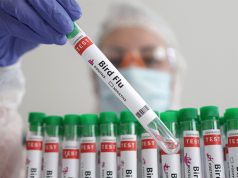The World Health Organization officially introduced the official name of the new coronavirus strain as COVID-19 after it already infected thousands of patients in China and across the world.
The international health agency even considered the outbreak as a public health emergency of international concern on January 30 amid the rising confirmed and suspected cases in at least 25 countries.
As of February 12, a total of 45, 171 patients were confirmed in the world, 1, 114 deaths in China and one death outside of China, which is in the Philippines.
Tedros Adhanom Ghebreyesus, head of the World Health Organization, announced the new name this way:
“We now have a name for the 2019-nCoV disease: COVID-19. I’ll spell it: C-O-V-I-D hyphen nine—COVID-19.”
🚨 BREAKING 🚨
"We now have a name for the #2019nCoV disease:
COVID-19.
I’ll spell it: C-O-V-I-D hyphen one nine – COVID-19"
–@DrTedros #COVID19 pic.twitter.com/Kh0wx2qfzk
— World Health Organization (WHO) (@WHO) February 11, 2020
The announcement, however, created some confusion on social media after getting used to the previous names “novel coronavirus,” “Wuhan pneumonia,” “Wuhan coronavirus,” and “2019-nCoV” to describe the new pathogen.
Some Filipinos even poked fun at it, saying the COVID-19 sounded like the name of a new Kpop group.
WHO bat ganito parang announcement ng bagong kpop group https://t.co/4Rby34OkoZ
— Satan (@ITSYABOISATANAS) February 12, 2020
The Department of Health, meanwhile, adapted the official tag as it reminded the public on the use of surgical masks as a preventive measure.
Mahalagang Paalala: Alamin kung paano mapoprotektahan ang sarili laban sa COVID-19.Isang paalala mula sa inyong Kagawaran ng Kalusugan.#ItoangTotoo #COVID19 #novelcoronavirus
Posted by Department of Health (Philippines) on Wednesday, February 12, 2020
Why is it important to have an official name?
Severe illnesses such as the swine flu and the Middle East Respiratory Syndrome were often named after the place or animal where the outbreak originated.
Whether official or not, these labels were heavily criticized for being insensitive to cultures, races, ethnicities and animals.
“We’ve seen certain disease names provoke a backlash against members of particular religious or ethnic communities, create unjustified barriers to travel, commerce and trade, and trigger needless slaughtering of food animals,” the WHO said back in 2015.
In the case of the new strain, the agency became cautious with coming up a name this time.
“Under the agreed guidelines between WHO, the World Organization for Animal Health and the Food and Agriculture Organization of the United Nations, we had to find a name that did not refer to a geographical location, an animal, an individual or group of people, and which is also pronounceable and related to the disease,” Ghebreyesus said.
“Having a name matters to prevent the use of other names that can be inaccurate or stigmatizing. It also gives us a standard format to use for any future coronavirus outbreaks,” he added.
Is it the name of the virus or the disease?
COVID-19, short for coronavirus 2019, is the name of the disease not the virus.
The official name of the virus remained to be the severe acute respiratory syndrome coronavirus 2 or SARS-CoV-2, according to the Coronavirus Study Group of the International Committee on Taxonomy of Viruses.
The ICTV, the body responsible for classifying new pathogens, found the new one having similarities to the SARS pandemic between 2002 and 2003.
Besides, the the word “novel” cannot always be attached to the SARS-CoV-2 because any new coronavirus pathogen will be called “novel.”










